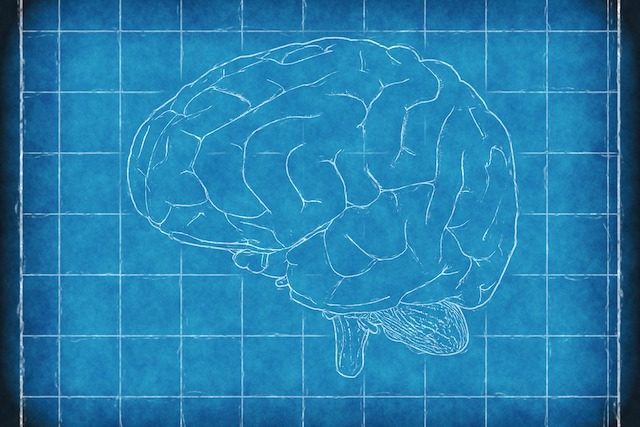Ralph Waldo Emerson once said, “Build a better mousetrap, and the world will beat a path to your door.” The idea is that you can take an old idea, even a good one, and improve on it to make something even better. It’s a great idea, and the world is full of examples of this happening, and we can see it in everything from computing to the evolution of pizza. But sometimes we get stuck on an idea and innovation, and even when something new and better comes along, we stick with the old version. Why? Good question!
10. The Richter scale has been out of favor for decades

If you go online any day after the earthquake, you can guarantee that you will see without a shadow of a doubt messages in the news and social media about the strength of that earthquake. They will tell you whether the earthquake was weak or strong on the Richter scale. Low numbers aren't that bad, high numbers are really bad. Most people have a basic idea of this and what the Richter scale means. Few of us know that the Richter scale is outdated and has been around for decades.
The moment magnitude scale is the preferred method of measuring seismic activity, and was first detailed back in 1979. It is the standard scale used by scientific organizations such as the US Geological Survey.
The Richter scale was not a bad scale, but it had problems. Most notably, it was relative scale The Richter scale measures earthquakes relative to other earthquakes. Moment Magnitude can provide an absolute measure, measuring all seismic waves and detailing, among other things, fault slip and friction.
Another problem with the Richter scale was that its creator, Charles Richter, lived in California and was involved in measuring Californian earthquakes It was never designed to take into account conditions in other parts of the world. Nor was it designed to deal with really big earthquakes.
Moment Magnitude is designed to measure any earthquake anywhere under any conditions. It removes Richter's limitations and does so well, but it has yet to achieve not only acceptance but even basic awareness.
9. The Fujita tornado scale has been replaced by the Enhanced Fujita scale.

Like earthquakes, tornadoes are described to most people on a scale known as the F-scale or Fujita scale . Thanks to the 1996 movie Twister for popularizing the concept. The idea is that as wind speeds increase, the Fujita number increases, all the way up to the legendary F5, a kind of hurricane bogeyman of incredible strength. These speeds were based on an understanding of the damage caused by tornadoes. And, of course, media reports will let you know the F number of any new tornado even today.
The scale was developed in 1971 and had some noticeable limitations in the way she explained tornadoes. The biggest problem was, how do you rate a tornado that doesn't cause damage? If a tornado formed out of nowhere and destroyed some fields, it could literally be the most powerful tornado ever, but on the Fujita scale, it would have to be at the very bottom because it technically did nothing.
The scale is also based on "worst" damage, so if one building is destroyed and 1,000 are not, it is still considered destructive due to the damage caused. Additionally, wind speeds have been known to be greatly overestimated above F3.
Fujita's improved scale is gradually making up for the shortcomings of the old school Fujita. Some the media uses it , but is often not explained properly. Enhanced Fujita is wind scale , not just a damage meter. It can look at damage across an entire area and recognize that if a wooden shack falls down but a brick house doesn't, then maybe it's not an F4 after all.
8. The 5 stages of grief are not based on any science.

Even if you're not familiar with the name Kübler-Ross, you're probably familiar with the grief scale it refers to. Also called the "Five Stages of Grief," it purports to explain the five stages of emotion that people experience when grieving. The stages, in order, are: denial, anger, bargaining, depression, and acceptance. However, it turns out that this model isn't particularly scientifically sound. It doesn't explain how many or even most people grieve, and it wasn't intended to explain howmourners cope with loss.
Elisabeth Kubler-Ross developed the stages after studying terminally ill patients in the 1960s. So the grief she was referring to was a person’s own grief in terms of realizing they were dying. It wasn’t related to the grief you might experience over the loss of a loved one, a pet, an accident, or anything else. And to be fair to Kubler-Ross, she didn’t present it as a universal understanding of all grief either.
However No no evidence that most people experience something similar to these five stages. There is really no single way to express grief because it is a human emotion, and how can it follow set steps from one person to another? This would seem to indicate that grief is something that is inflicted on people in the same way from some external source, which makes no sense.
7. Driving with your hands at 10 and 2 o'clock is considered unsafe

“Hands at ten and two” is a cliche you’ll encounter when learning to drive, and an image that pops up in sitcoms from time to time when someone is learning to drive. For years, it’s been the standard rule for where to keep your hands on the wheel, likening the steering wheel to the face of a clock and specifying that your hands should be aligned with ten and two. They even make smart steering wheel covers , which warn you if your hands leave this position.
For several years now, ten and two have not been popular with drivers and organizations involved in driver safety. AAA and others for more than ten years now instruct drivers to keep the steering wheel in nine and three o'clock . The same thing is said by National Highway Traffic Safety Administration .
Part of the reason for the switch is due toposition of the airbag. If your hands are at ten and two, you are in the perfect position for an airbag to deploy and hit you in the face with your hands at 100 miles per hour.
6. The idea that you have 5 senses is very outdated.

The idea that humans have five senses—sight, touch, hearing, smell and taste—dates back to ancient Greece, whenAristotle assured us that humans have five senses and no more. Unsurprisingly, the idea has changed somewhat over time. While most people still think five is a real number, others suggest that there are many more, even more than a dozen. Google it and you'll find sites listing as many as 18 .
Back in 1964 An article was published in the New York Times, which detailed the limitations of the five senses model and included things like balance, among others. Others mention senses like proprioception , which allows you to feel your body in space.
The sense of time, weight, humidity, distance, even the need to urinate - all these were mentioned as additional senses that Aristotle's simple five did not take into account.
5. The idea of repressed memories is not generally accepted in psychology.

Repressed memories have been the basis for many dramatic films and talk shows, but the science behind them is dubious at best. While some clinicians still support their validity, those who study memory scientifically say they are simply does not exist Repressed memories, as the term is understood, are either things we have just forgotten, memories that may have been implanted through suggestion, or things that someone is consciously suppressing.
Repressed memory was at the forefront of the Satanic panic of the 1980s and 1990s, when people claimed to have been abused in Satanic cults as children and repressed their memories. The FBI has been unable to find no evidence that it ever happened, and there are studies , showing that a number of clinicians are using suspicious methods to "uncover" supposedly repressed memories.
4. Blood Quantity Still Determines Native American Status

In the United States, your ability to become a Native American depends on your Blood Quantum. This is your percentage. native blood " according to certain guidelines. Many tribes, such as the Navajo, set their own requirements for this, and they still do. However, the original idea behind Blood Quantum was for the government to decide who was eligible for Native American status. The Department of the Interior will literally give you a "Certified Indian Blood Degree" card for your wallet.
It's a controversial issue to this day, but it still stands. Part of the problem stems from how it was created in the first place. Your blood percentage based on census data , but they were often filled out by non-natives. In some cases, they looked at the person and decided they didn't look Native, so they weren't included, even though they were 100% Native American. Likewise, they might list someone as full blood without any evidence to back it up.
3. The language map was refuted many years ago

Language map is a concept that is more 100 years , developed by the German David Henig and suggesting that different areas of language have taste characteristics . Sweet was felt at the tip, salty at the front, sour at the back, and bitter at the back. The center was practically useless. This was so common that they not only taught it in school, they made kids do experiments to "prove" it, which was no fun for most students since it is not accurate and therefore not easy to prove experimentally.
In 1974, Virginia Collings showed that Hanig's map was inaccurate. We now understand that taste buds much more difficult , than a simple regional map, not to mention that umami is a recognized fifth taste that wasn't even considered on the old map. Despite this, it's still widely known and shared on the Internet.
2. The Scoville scale is based on very arbitrary and subjective science.

A few years ago, the world became obsessed with heat. Hot peppers, hot sauces, and even spicy Cheetos became pop culture phenomena. The popularity of Hot Ones, a talk show where guests eat hot wings, shows that it still has staying power. And the Scoville Heat Unit was our only way to understand how hot these things were, despite the fact that it’s highly unscientific and subjective.
Pharmacist Wilbur Scoville developed his own scales back in 1912 . The way it works is a little confusing. You need to dry the peppers and then dissolve them in alcohol. Then dilute this pepper mixture sugar water until 3 out of 5 people, whoever they are, can't feel the heat anymore. If one unit of sugar water dilutes one unit of pepper mixture, then the Scoville is 1. If it's 10,000 units of sugar water - whether it's drops, ml, or whatever - to one unit of pepper, then that's 10,000 Scovilles. That's how they get the ratings, and you can see the flaw. Who are these 5 people? Have they been trying peppers all day? Do they literally try the same mixture over and over until they can't feel the heat anymore? If so, how do we know their tongues haven't just gone numb?
These days, chromatography and electrochemical testing are used to more accurately account for the heat of peppers, but they still assign a Scoville number, even if the testing method is different.
1. The United States still uses imperial measures, despite switching to the metric system almost 50 years ago.

Every now and then you'll come across someone on the internet making fun of the metric system. America is one of three opponents around the world that shun the widespread adoption of metric. The other two are Liberia and Myanmar. However, metric is actually an accepted, accepted, and legal system of measurement in the United States, at least for trade and commerce, and has been since 1975. Just don't tell anyone.
Law on the metric conversion of 1975 , amended in 1988, 1996, and 2004, established the metric system as the preferred system of weights and measures. In fact, the metric system has been authorized for use since 1866. Despite this, almost all measurements in the United States are still made using imperial units of measurement, such as miles and pounds.














Оставить Комментарий